HOMECOMING 2022
From the bonfire to the football game, University of Arizona Homecoming brings together past and present students to celebrate being Wildcats for life.







From the bonfire to the football game, University of Arizona Homecoming brings together past and present students to celebrate being Wildcats for life.



























Keryn Aponte Galadriel Gross Nettie Gastelum Jasmine Ma Mary Ann Vagnerova Valentine Modestine Farrah Rodriguez Emilie Marie Cuevas


















Carly Marckovich Caitlin Claypool Jackie Cabrera Marrison Bilagody Ben Tisdale Gracie Kayko Antonia Muskat Noor Haghighi Annika Rogozin Kohichiro Yamada Amelia McAnear Liv leonard

JT Thorpe Hannah Martuscello John Konrad
Copy Editors Ash Johnston May Otzen Hannah Palmisano Mason Duhon Emilee Ceuninck
UATV
gm@UATV.arizona.edu
Reimers gm@KAMP.arizona.edu
Many dream of becoming Homecoming queen or king, but could you imagine representing 44,000 students at the University of Arizona? Anna Rose Quinn and Deip Sekhadia were honored to win queen and king for the 2021-22 school year, and they loved the camaraderie shared with their fellow nominees.
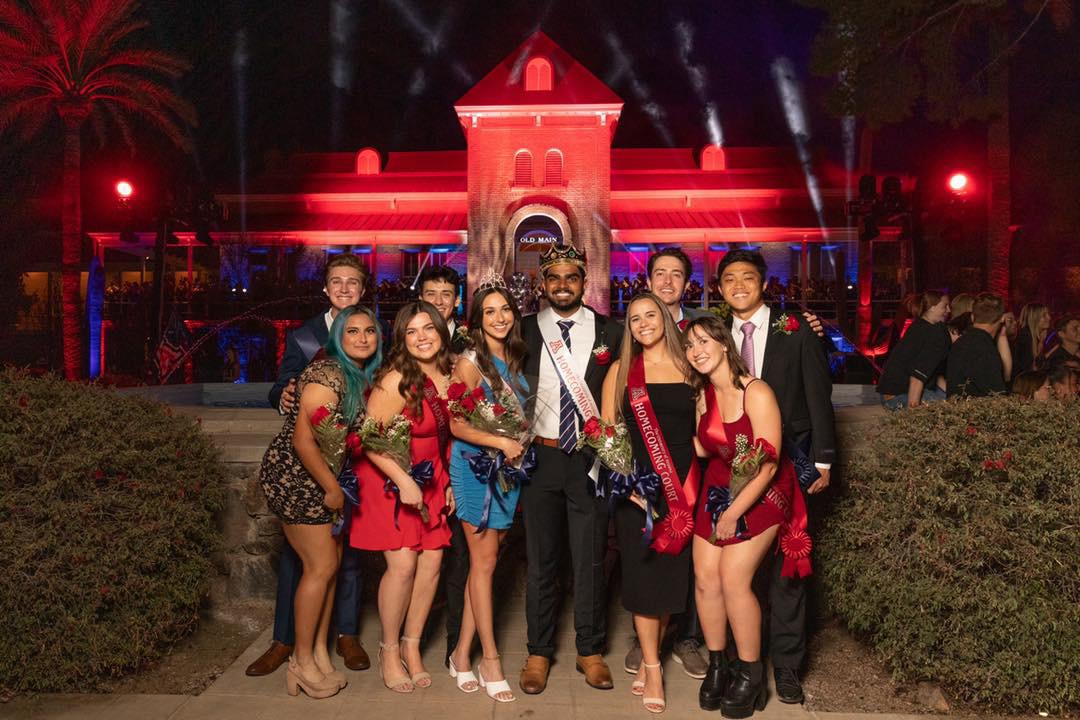
Quinn could not get enough of the UA and continues her education as a masters student of science in marketing. She was proud to represent a variety of organizations such as the Dean’s
Council, Kappa Alpha Theta and the Eller College of Management.
“I was lucky enough to call them home for my time in undergrad. I think it is a huge honor to represent the university and those organizations that helped shape me into the person that I am,” Quinn said.
Quinn described the nomination process where the queens were chosen by Bobcats Senior Honorary and kings by Mortar Board National Senior Honorary. There were around 45 students nominated by organizations to attend mixers, events and UA games before entering the top five.

Sekhadia was nominated by Alpha Epsilon Delta and was also involved in
Links Junior Honorary and research labs on campus. Most of the nominees were highly involved within their organizations, already serving as ambassadors for the UA.
Sekhadia and Quinn attended many mixer events with the other nominees and honoraries where they were able to get to know more about their peers and the UA.
“I think it was really special because I wasn’t expecting it to be as groupfocused as it was. We spent all day, every day
together that whole week, and I feel like they know me better than some people do,” Quinn said.
They were immersed in UA culture through events, campaigning and the Homecoming football game, the only game UA football won last season. Both Quinn and Sekhadia described this as good fortune for their thrilling week.
“It was the game that we won. … We won and everyone was screaming and the university was electric. It was a great way to end the Homecoming celebrations and a great memory that all of us will share,” Sekhadia said.
Their main duty as Homecoming king and queen candidates was to be role models and ambassadors for the university.
Many UA alumni and families would come up for photos while the king and queen were out, according to Quinn. She recalled times when children would approach her on the street, hoping to be queen someday.
The events that the remaining top five candidates attended included club olympics, the lighting of “A” Mountain and the bonfire. At the club olympics, organizations were invited to compete in games and activities to build interclub connections and camaraderie, an important value of Homecoming week.
The king and queen were announced at the bonfire. It was a nerve-racking and tender moment as it was the last event for all 10 students to be together as nominees.
“I really didn’t think I was going to win so it was a great shock seeing that,” Sekhadia said.

Quinn described the win as an honor. The two became very close after weeks of connecting and were ecstatic to win together.
The royal responsibilities all equated to bringing future, current and past Wildcats together. As queen and king, Quinn and Sekhadia were able to impact future students and serve as role models within the UA tradition and heritage.
As per tradition, the 2022 UA Homecoming king and queen will be announced at the bonfire outside of Old Main. This year, the event will be on Oct. 28, at 7 p.m.
Every year for Homecoming, the University of Arizona welcomes alumni back to campus to partake in their fair share of traditions and celebrations. One annual Homecoming tradition at the UA is the lighting of Tucson’s Sentinel Peak, commonly known as “A” Mountain.
Bobcats Senior Honorary handles all things Homecoming, and Lahari Samak and Carly Snell are the two Bobcats who are specifically in charge of the tradition of lighting “A” Mountain.
“Historically, Bobcats Senior Honorary helps orchestrate lighting of ‘A’ Mountain. [‘A’ Mountain] is obviously very near and dear to the [UA] community, and the tradition is that every Sunday before Homecoming starts, all these alumni and other students come back to campus for that weekend and start off the week by lighting up the mountain,” Snell said.
The lighting of “A” Mountain is a big part of what makes Homecoming special to many past and present Wildcats, but this year they’re doing it a little differently.
“For the past couple of years, it has been on Sunday to be the initiation of Homecoming sort of similar to the Olympic torch, but a lot of alumni tend to come later on in the week. We wanted to make sure that they were included in all of the major activities for Homecoming, so we’re actually moving it to Thursday so that everybody in town, students, faculty and people of Tucson
can attend,” Samak said.

The lighting of “A” Mountain hasn’t always been a tradition, though. It was stopped for a while and brought back to the university in 2008.
“So it originally started in the ‘80s, and I think it went away once a lot of the taller buildings were starting to be built. It was brought back in 2008 actually by the Bobcats Honorary, and ever since then, it’s been the tradition for Homecoming,” Samak said.
Since it was brought back, it has been a staple of the UA community and to students who attend the annual lighting ceremony.
“I’ve gone every single year, but [I] went with the various organizations that I’ve been a part of. I was in Freshman Class Council my freshman year, and we went to the ‘A’ mountain lighting that year,” Snell said. “Ever since then, I’ve been in some organization, so I’ve gone with a bunch of different friends. It’s interesting to me every time I come back and just see how much my life has changed since then.”
The history of “A” Mountain runs even deeper than just the UA community itself.
“‘A’ Mountain is so important to the university. … I was actually at this alumni event a couple of weeks ago, and this gentleman who represents some of the Native tribes in Arizona was talking about how Sentinel Peak is similar to one of the words used in their Native language. So [the history of the mountain] goes back a long time to before we even got here; it’s just always been this huge peak,” Samak said.
In addition to the day change this year, the lighting of the “A” will also bring back some older traditions as well.
“In previous years, the lighting of ‘A’ Mountain has been actual sparklers on the mountain. These past couple of years, it has been different because of [COVID-19] and other things going on, but we’re back to sparklers again, which I’m super excited about,” Snell said.

The annual lighting of “A” Mountain will take place this year during Homecoming week on Thursday, Oct. 27.

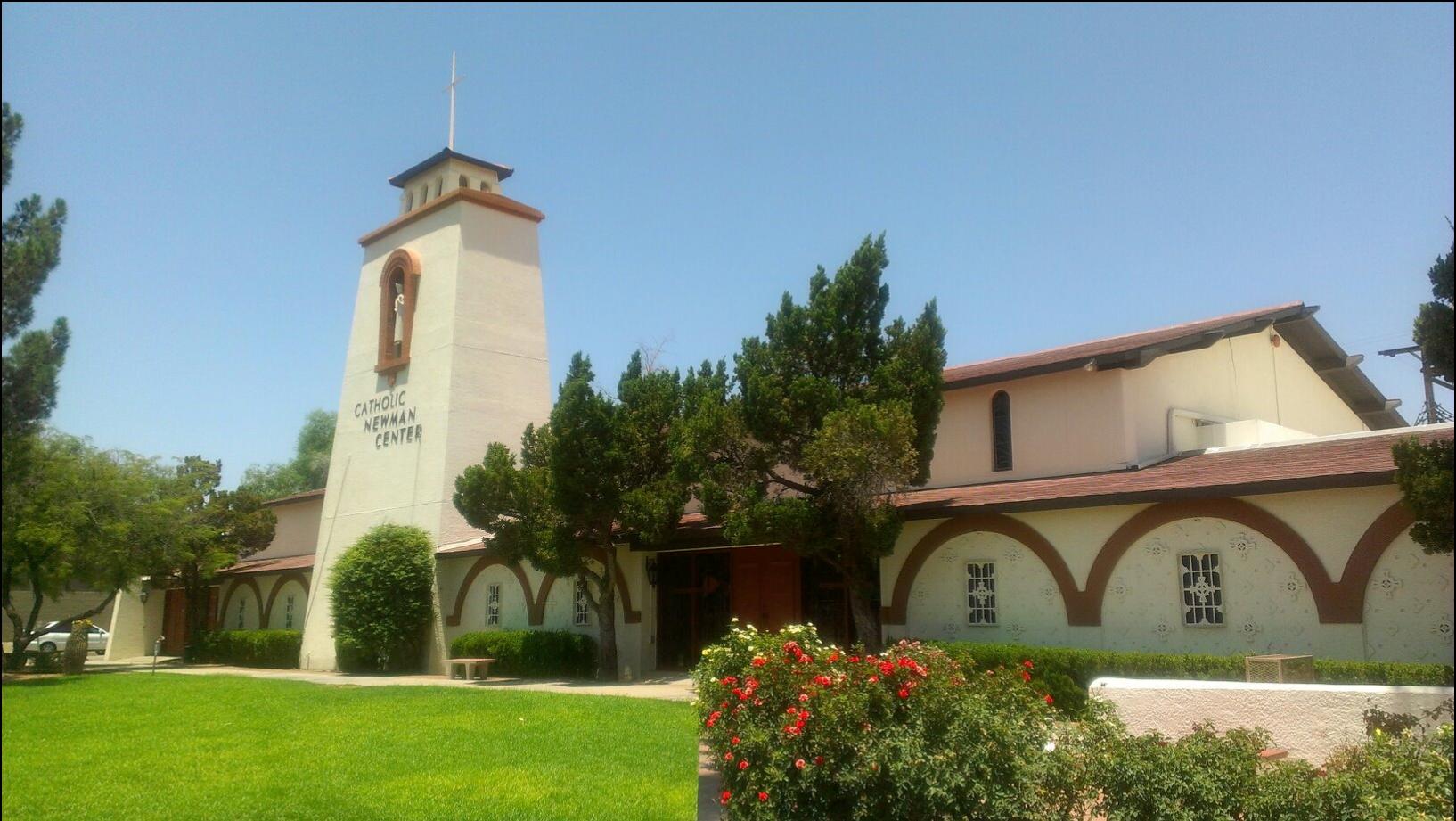

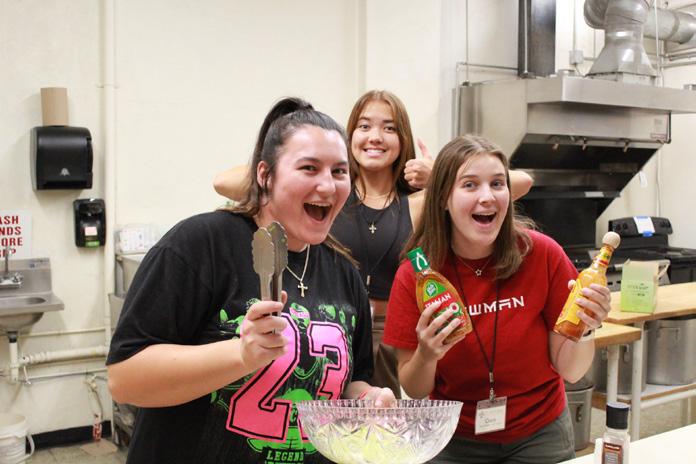










With Homecoming right around the corner, the Homecoming court is going through the final stages of review before the nominees are announced and a final king and queen are voted upon.
But what goes into choosing a Homecoming royalty finalist?
Marc Acuña, the senior director of alumni and student engagement at the University of Arizona and the advisor of the Bobcats Senior Honorary, went into detail as to how it works.
“There are two different parts. Mortar Board works and picks the top five kings and then Bobcats Senior Honorary picks and chooses the top five queens. So two separate committees work together and once they’ve chosen their top five each, then we come together to do the Homecoming festivities,” Acuña said.
Acuña has been the senior director for the last six years and manages the engagements as well as the student programming of student alumni and Bobcats Senior Honorary.
“The process for us [for Homecoming queen] is an interview. [First], you have to be nominated by a student organization, your student organization or another student organization can actually nominate you. Once you’ve been nominated you have to fill out an application. The application form asks questions, talks about your experience on campus as a leader. Once you fill out your application there’s a whole grading process, an interview process, a mixer process; it’s about a month and a half process. Once that happens, we narrow down the 50 [or] 60 applicants to our top five queens and then they go on to
Homecoming olympics, they get voted on [and] all those pieces come together,” Acuña said.
Acuña is only one part of the Homecoming committee, but Nallely Gonzalez is a part of the other half, Arizona Mortar Board.
As Homecoming committee chair,
Gonzalez is one of the members who organizes the Homecoming nominee selection process.
“Right now, currently, there’s three Homecoming chairs and our president, who’s been really involved this semester in setting up events to assess them [the


nominees]. We also ask our mortar members to come and join these events and help us assess them. Obviously, there’s always going to be people that you know who have been nominated, and we try to keep it as unbiased as possible, so we try
to get people who don’t know any Homecoming king nominees. We divide them up to go in sections specifically with Homecoming kings they don’t know. That way we keep it as unbiased as possible. I would say maybe about 20 people total of our members show up to events,” Gonzalez said.

Nallely Gonzalez has been a Homecoming committee chair since last semester and has taken on a more active role this semester with Homecoming.
“I think [the Homecoming king and queen] are important because they’re representatives of the school. It’s an honorable position and personally, for me, it would be an honor to be nominated, even though I’m just behind the process. [The king and queen] represent the school in true spirit and what a Wildcat is. I think it’s important to have that representation of someone that when you look at them ‘that’s definitely a Wildcat’ like U of A material. It’s someone you just feel honored to know and have representing your school,” Gonzalez said.
The time and effort that goes into choosing the Homecoming court allow for brand new people to represent the Wildcat spirit and represent the school as a whole.
“The Homecoming Bonfire is just my favorite thing. As an alum [and] also as someone who actually manages it and puts on the event, it’s so cool to just see thousands of people, from kids to our legendary older alums, [attend]. We see this whole wave of alumni in blue as we light up the bonfire, and we crown the king and queen. It’s a really good celebration of what Homecoming is and what it truly means to be a Wildcat,” Acuña said.
The 2022 UA Homecoming king and queen will be crowned on Friday, Oct. 28, at 7 p.m. at the Homecoming bonfire.
The University of Arizona’s sororities and fraternities are gearing up for their Homecoming festivities.
Abby Mayhew, Kappa Alpha Theta vice president and recruitment chair, is a senior majoring in marketing with a minor in sociology. She summed up the roles of sororities and fraternities throughout Homecoming week.
“All in all, it’s just a week of celebration with a fraternity on campus and

sometimes sororities will go on their own to do internal sisterhood events to celebrate
Homecoming that way,” Mayhew said.
She especially loves the creativity that fraternities use when it comes to proposals.
These proposals determine which fraternity a sorority will do Homecoming events with. Mayhew shared that events can be anything from a philanthropy event to just bonding and building community within Greek Life.

“My freshman year was the most authentic Homecoming experience I’ve had because
it was [pre-COVID-19]. We were asked by two fraternities that came to our chapter and they made some elaborate proposals. One of them was themed ‘the Bachelorette’ and they brought a bunch of roses and said ‘Will you accept this rose?’ to ask you to Homecoming,” Mayhew said.
Kappa Kappa Gamma President Katie West, a senior majoring in journalism with minors in government and public policy and psychology.
As president, she seeks to make sure all Homecoming events go according to plan.
“Panhellenic chapters
don’t do a ton of planning if they decide to take part in these Homecoming events. I would definitely take on the role of making sure everything is going smoothly, making sure members are being safe, making sure no one’s hurt and making sure no one’s putting themselves in danger. Things like that are what I’m super focused on this year,” West said.
As well as member safety, she said she also enjoys the school spirit shown throughout the week.
“I personally have a really
big connection with the [UA], so celebrating that is super special for me. Seeing everyone getting so involved and the school spirit really shining through is my favorite part,” West said.
Natasha Barton is a senior majoring in physiology and Spanish with a biochemistry minor. As the academics/ scholarships chair of Gamma Phi Beta, she helps members struggling with GPA and rewards those with a 4.0.
Barton views Homecoming as a chance for members to view the bigger picture of sororities.
“It’s important to kind of remind us that we’re not all supposed to be divided in these different chapters, but rather we’re all kind of together and we all are looking for the same thing within a sorority. We’re just looking for lifelong friends and a way to give back to our community, so think it’s a good way to remind us that we’re not competing against each other and to get out of our own sorority,” Barton said.
Alumni play a big role in building community during Homecoming. Every year, they connect alumni and current members to mingle, share ideas and build a relationship within the chapter.
“It’s bringing our alumni back, we always just have a lot that come through and we just want to welcome them. [We also want to] Talk with them, and hear about what our sorority was like back then and honestly try to grab ideas from our history,” Barton said.
Barton also reflected how the time leading up to Homecoming is about taking advantage of the time to embrace school spirit.
“For our members that are active and not alumni, we just like to take extra time together, talk about why we chose the [UA], what makes the [UA] special to each of us and kind of just connect it back to Gamma Phi and how we became friends through Gamma Phi,” Barton said.
As much as Homecoming is a celebration, it also poses as a way to meet new people, make new connections and remember your roots.
HUNDREDS OF PEOPLE GATHER around the University of Arizona’s Homecoming bonfire in front of Old Main on campus on Friday, Oct. 28, 2016.
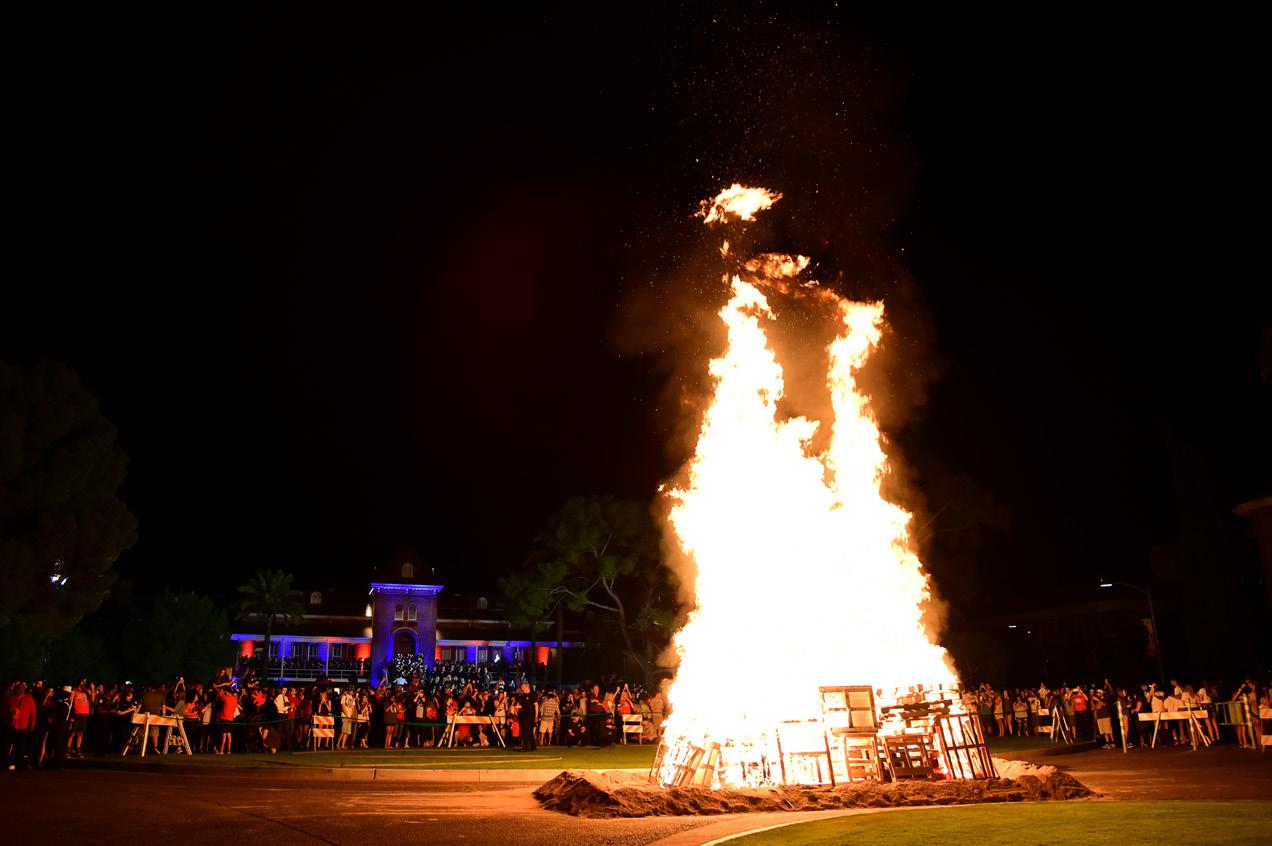
Homecoming remains one of the largest events held on campus with thousands of alumni returning to reconnect with classmates, cel ebrate alongside current students and more.
UNIVERSITY OF ARIZONA MASCOTS Wilbur and Wilma Wildcat cheer during the school’s Homecoming bonfire in front of Old Main on campus on Friday, Oct. 28, 2016.
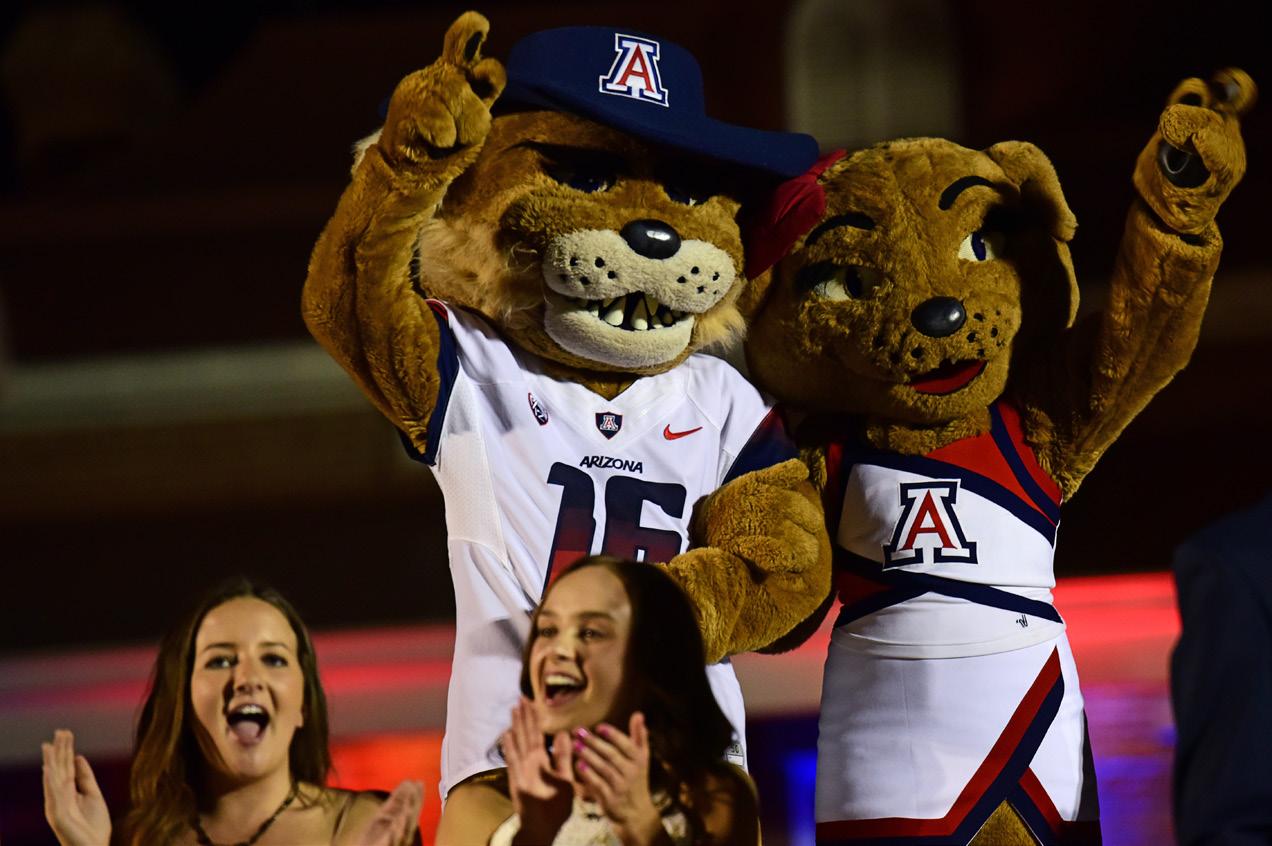
They officially became the UA’s mascots in 1986, which is also when the pair married on the field in Arizona Stadium before a football game against Arizona State University.
THE PRIDE OF ARIZONA marching band walks into Arizona Stadium to perform be fore the Arizona football game on Sept. 10. The band performs twice on the field at every football game and plays short songs up in the stands next to ZonaZoo. As per tradition, the band will also perform at the UA’s Homecoming bonfire at Old Main on Oct. 28.

A WILDCATS FAN CHEERS during the Homecoming pa rade on the UA Mall on Oct. 27, 2018. Homecoming is mainly meant to cel ebrate alumni and welcome them back to campus, but there are many activities anyone can attend, such as the football game on Oct. 29.

THE TUCSON FIRE DEPARTMENT monitors the fire at the University of Arizona’s an nual Homecoming bonfire and pep rally outside of Old Main on campus in October 2018. Every year, the fire depart ment helps the UA with the lighting of “A” Mountain and the Homecoming bonfire to ensure the safety of the community. At every bonfire, the Homecoming king and queen are an nounced and the Pride of Arizona marching band performs up on Old Main. This year’s bonfire is on Oct. 28.
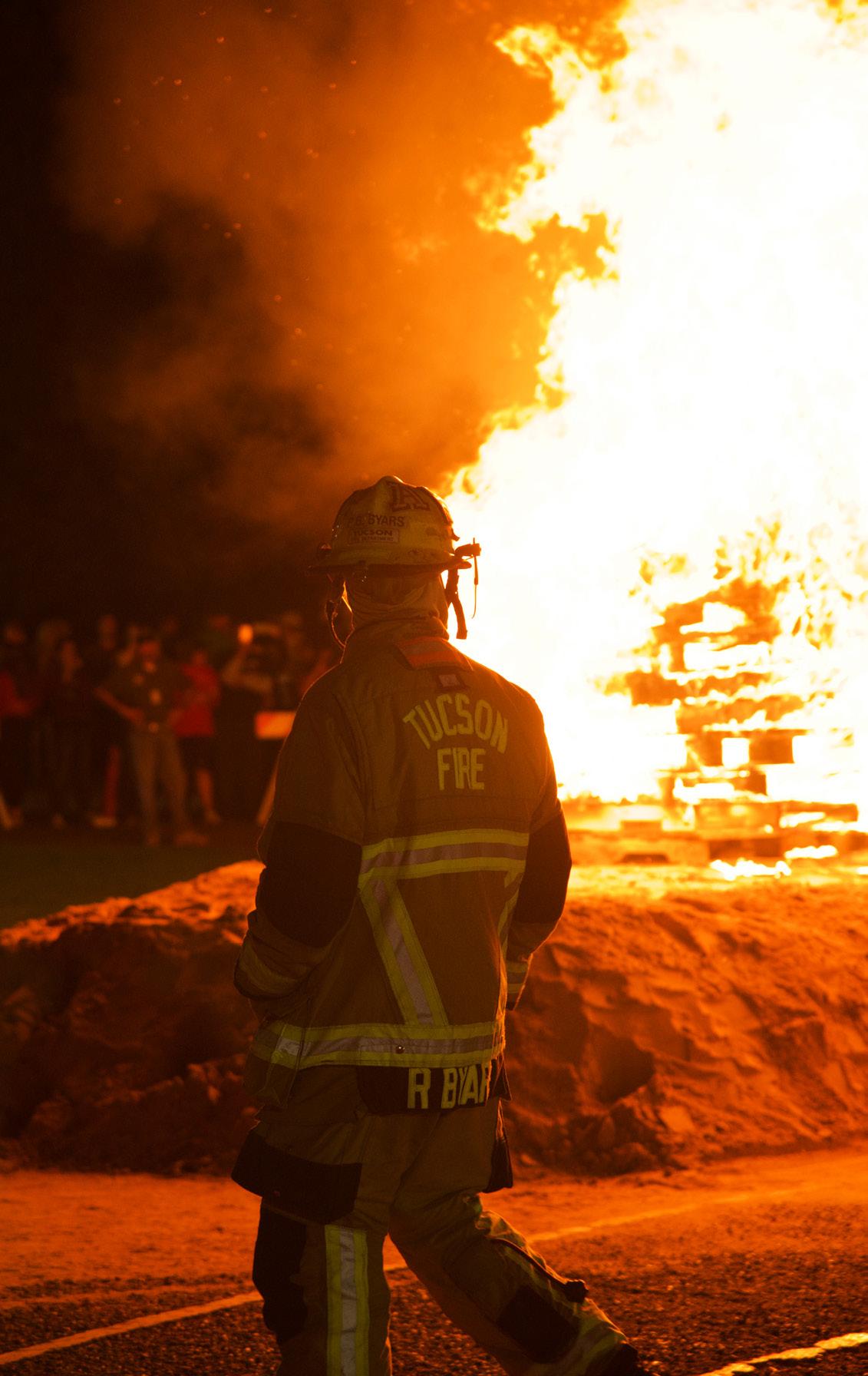

Want to stay updated on Arizona sports? Follow the Daily Wildcat Sports Desk on Twitter:

Daily Wildcat Football podcast” and
Mohammed Usman was a favorite to win for season 30 of the Ultimate Fighter at the Ultimate Fighting Championship Apex in Las Vegas in May, and the brother of former UFC welterweight champ Kamaru Usman did not disappoint.
During the championship for the heavyweight division, the former University of Arizona defensive lineman brutally knocked out Zac Pauga early in the second round.
“Playing for the Wildcats, it was a real blessing,” Mohammed Usman said. “I was very excited to be playing for the UA.”
Mixed martial arts runs in the Usman family; Mohammed Usman’s brother, Kamaru Usman, has been competing in the UFC since 2018 and became the welterweight champion in 2019. But Kamaru Usman wasn’t just any UFC fighter; he is one of the greatest of all time. He was the UFC’s No. 1 pound-for-pound ranked fighter for over a year until he was recently defeated by Leon Edwards.
“He gives me a lot of advice and we have a great relationship and he’s been my No. 1 fan since I started,” Mohammed Usman said. “I would be lying to you if I said there wasn’t any pressure, but I embraced it. Sometimes when you embrace the pressure, I don’t have nothing to lose. In my mind I don’t have nothing to prove to these guys.”
Mohammed Usman played for the Wildcats from 2010-12. During
his second season as a Wildcat and senior season in college football, he played in 11 games while totaling 19 tackles and one sack.
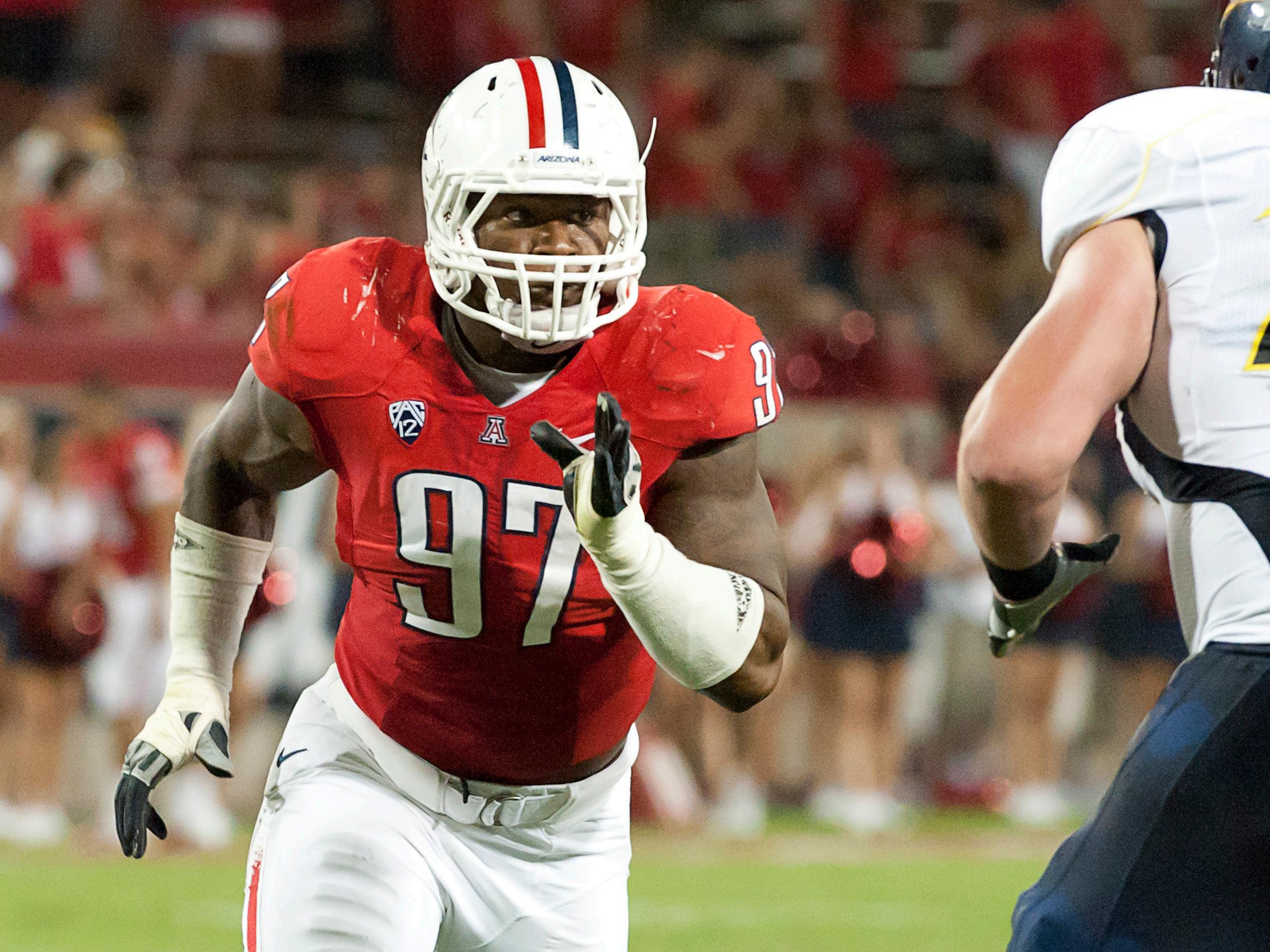
Mohammed Usman came to football after competing in wrestling in high school, when he was a former Texas state wrestling champion. His main goal after high
school was to make it to the NFL, but combat sports was always in the back of his head as he watched his brother’s success. Mohammed Usman felt he could compete at that level, as well.
“It was a more logical thing out of high school to play football than to wrestle. I am glad I wrestled in
high school because it gave me that necessary time,” Mohammed Usman said. “Wrestling would always prepare me to go dominate playing football because I would be in phenomenal shape. It’s the best of both worlds.”
After Mohammed Usman finished his last season at the UA,
he went undrafted in the 2012 NFL draft. He then played one season with the Uppsala 86ers of NFL Europe in Sweden, where he won import player of the year.
In 2016, Mohammed Usman was working at LA Fitness and decided to end his football career to pursue a path in MMA. He recently became a father and decided to follow his brother into the ring.
Mohammed Usman competed on season 30 of the UFC’S Ultimate Fighter competition in Las Vegas during the summer and defeated three competitors to become the Ultimate Fighter season 30 champion.
“I know myself and I know my abilities, and I know if I put forth all the effort and all the work, I know I’m going to win,” Mohammed Usman said. “I was just very happy man, because I have been through a lot in my life, ups and downs. For me to kick the door down, it was such a blessed feeling.”
A month after his championship bout, Mohammed Usman is back in the gym in Colorado training for his next fight. As of right now, he doesn’t have a confirmed opponent or date, but he and his team are targeting December or January.
“The No. 1 goal is to win my next UFC fight and big up these small goals, which turns to our big goals,” Mohammed Usman said. “The ultimate goal is to be UFC champion; I want to hold the gold up. I know people say that, but I really mean it. I want to join my brother as UFC champion.”

One of the biggest college football games of the year is almost here: the Homecoming game Oct. 28.
This is a historic weekend for many reasons: football, reunions, college spirit and pride. Homecoming traditions started at Arizona in 1914 where the Wildcats defeated Pomona College 7-6. There have only been two points in the school’s history where Homecoming was canceled as a whole, and that was during World War I and World War II.
This is not just a weekend where a traditional football game is played, but one that is played while honoring legendary Wildcats of the past while parktaking in historical traditions along the way.
Arizona’s mascot, Wilbur T. Wildcat, was introduced during Homecoming Weekend in November of 1959 against Texas Tech University Red Raiders.

The Homecoming parade was announced in 1929 and has been held every year during the respective Homecoming Weekend.
Last season was a special Homecoming Weekend for this Arizona football program. They beat the University of California, Berkeley Golden Bears 10-3 and broke their 20-game losing streak dating back two years.
This year, the No. 6 USC Trojans will come to Tucson to face off with the Wildcats on Oct. 29. USC is leading the alltime series between the two schools 37-8.
Arizona is currently on a nine-game losing streak against USC and hasn’t beaten them since 2012. Over the last 20 seasons, the Wildcats only have defeated the Trojans two times.
During three of the last four meetings between the two teams, Arizona has only lost by a touchdown or less.
The Wildcats are 3-2 during their previous five games during Homecoming Weekend. Arizona is coming into this game with a new mentality and a team that has recently experienced winning. They won three games during the first six weeks of the season while winning the most games since the 2019 season.
Head football coach Jedd Fisch is currently 1-0 during Homecoming Weekend and is poised to pull off the huge upset of a top-10 team in college football against USC.
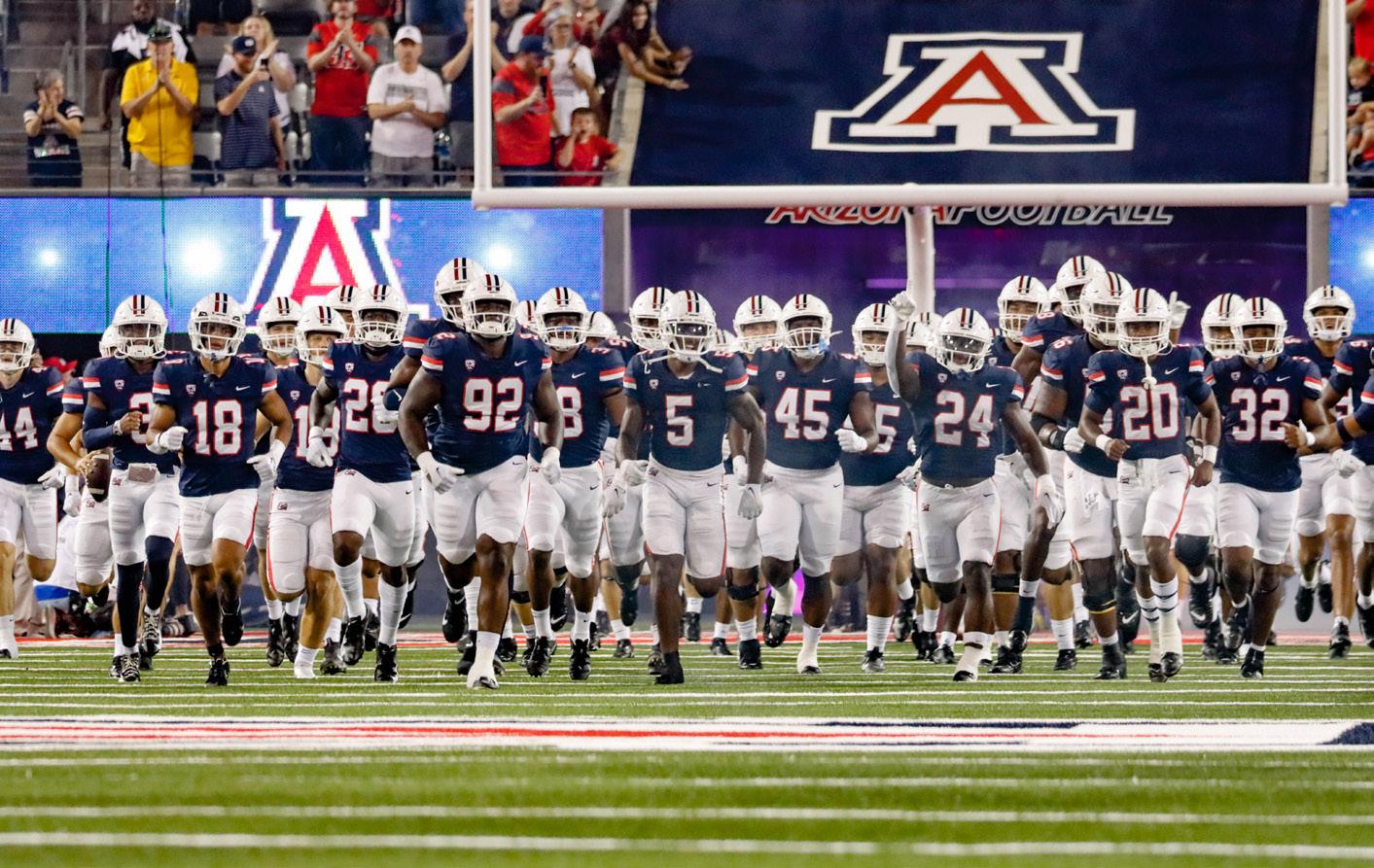
The Arizona women’s basketball team stepped out on the court on Sept. 30 to discuss specific things they worked on over the summer and what they are looking forward to in this upcoming season.
Last year, Shaina Pellington represented Canada on the national team in the 2020 Olympic Games over the summer in Tokyo. She transferred to the University of Arizona after her sophomore year playing at the University of Oklahoma.
Pellington is an outstanding point guard who is fast and makes quick decisions. Over the summer, she worked on her consistency from her outside perimeter shooting with lots of repetition.
Last year was Madison Conner’s first year as a Wildcat, and she played in 28 games. She is a key player on the team with a high shooting average. She is a talented point guard who was the first to receive an offer in her class.
“My biggest improvement from last season is my physical attributes; I have been working on getting strong in the weight room,” Conner said.
Lemyah Hylton is from Ontario, Canada, and will play her first season as a Wildcat. She played at Southwest Academy Girls Preparatory.
Hylton can pass, defend and score. Overall, she is a well-rounded player with lots of potential. She is a four-star guard that chose Arizona over four other top schools.
Esmery Martinez, a West Virginia University transfer player, made All-Big 12 First Team in 2021. She is an excellent add-on to the Arizona women’s basketball team’s offense.
Head coach Adia Barnes won over Martinez when she was deciding where to transfer. Martinez can be found in the paint rebounding for Arizona. One thing Martinez decided she wanted to bring to the team this year is energy.
“My energy, I have been trying to get the team ready to go with excitement,” Martinez said.
Last year, Helena Pueyo dominated in defense and was an All-Defensive Team Honorable Mention. Pueyo played in all 29 games last season and looks ready for this upcoming season. Pueyo is from Palma de Mallorca, Spain but made Arizona her home. She had to adjust her style of play by being more physical, so this off-season she worked on her strength.
Kailyn Gilbert | 5-foot-8 | G
Kailyn Gilbert is a new freshman from Tampa Bay, Fla., who attended IMG Academy. Her position is point guard. Gilbert was selected for the USA Basketball U18 team. She was a highly sought player that has an impressive history of high school basketball organization selections. As part of being on the team, Gilbert has stated that she wants to “be in the moment and take it all in.”
Paris Clark is originally from the Bronx, N.Y. Her current position is a guard. Clark has great court awareness, manufactures and is a disruptive defender. She is a great addition to the team this year. A focus this summer for Clark was her shot.
“I have been working on my jump shot and getting that more consistent with that,” Clark said.
The former Oklahoma State University leading scorer Lauren Fields went into the transfer portal and was picked up by the University of Arizona. Previously having a 15.4 point-per-game average, she will be a threat to future teams. This summer, Fields discussed wanting to improve a few things in her game.
“[I am improving] on my consistency, wanting my stats to show improvement,” Fields said.
An absolute force to be reckoned with, Cate Reese has been All-Pac-12 for the past three years and last year received AP All-American Honorable Mention. Reese is coming off of a shoulder injury and was just cleared for contact after seven months of recovery. Reese dominates the court as a forward and is coming off of scoring 14.3 points per game last season.

Jade Loville is a transfer portal player that originally played at ASU, but just recently was picked up by the UA.
“I have been working on being an all-around player by not just scoring. I am working on passing and defending by working with my trainers,” Loville said.
Loville is excited to play Baylor University and thinks it will be a fun match-up between the two teams.
Lauren Ware just keeps getting better. She started in 22 games last year and improved her scoring average from freshman year. Ware wants to improve her overall game this season.
“[I am improving] my strength as well as improving my shot. I am working with my coaches on proper form and accuracy as I head into the new season,” Ware said.
Maya Nnaji is from Hopkins, Minn., and she played basketball at her local high school. In high school, Nnaji was known for
having great footwork, delivering efficiently in the paint and being a great defender. Nnaji’s brother, Zeke Nnaji, also played at Arizona during the 2019 season before being a first-round pick in the NBA Draft.
According to Nnaji, she has been working on “building [her] skills because [she knows] that it’s a big transition from high school to college.”

Plenty of new faces will be stepping on the hardwood for University of Arizona head coach Tommy Lloyd this November in McKale Center.
Lloyd is coming off a 33-win season and was named the Associated Press Men’s Coach of the Year last spring.
However, despite the return of Lloyd, Arizona could not retain last year’s Pac-12 Player of the Year Bennedict Mathurin.
The current Indiana Pacer led the Wildcats in scoring last season at 17.7 points per game. The program also witnessed the departures of Dalen Terry, another lottery pick of last year’s NBA draft, and center Christian Koloko, who got selected by the Toronto Raptors early in the second round.
No doubt Lloyd lost most of his scoring production from last season; nonetheless, he brought in a new house. Continuing a similar formula as he did up in Spokane, Wash. for Gonzaga University, Lloyd went networking overseas trying to find the next group of Wildcats. Lloyd landed 6-foot-9 wing Filip Borovicanin and 7-foot center Henri Veesaar.
Before arriving in Tucson, Borovicanin played for KK Beko, a professional basketball club in his hometown of Belgrade, Serbia. The four-star wing averaged 20 points and nine rebounds per game. Borivcanin was named MVP of the European Basketball League at age 16, averaging just under 35 points a contest.
Borovicanin is at his best slashing to the rim, and he can score from multiple spots on the floor. Given his upside, the coaching staff will be able to use him in many unique ways
along the wing.
Henri Veesaar joins Kerr Kriisa as the second wildcat to bring Estonian routes to Tucson. At 7-feet tall, Veesaar can play at both the power forward and center positions. Active and able to run the floor, Veesaar is the ideal big man for Lloyd, given the pace of play he favors playing at.
However, there are some concerns with Veesaar only weighing 200 pounds at 7-feet tall. For this season, the coaching staff prioritizes the development of Veesaar regardless of his production on the court. Veesaar will be working behind Oumar Ballo and Azuolas Tubelis.
The second pair of newcomers are freshmen from the Arizona. Both Kylan Boswell and Dylan Anderson went to high schools about 20 minutes
from each other.
Boswell committed to the Wildcats in February, but decided to reclassify this past summer, joining the team this year rather than in the fall of 2023. Before the reclassification, according to the ESPN databases, Boswell was ranked No. 18 in his class, one of the country’s most talented guards.
Boswell played high school basketball at a couple of schools in California before moving to the desert to play at AZ Compass Prep School, a public charter school located in Chandler, Ariz. that is well known for the athletic development of its players.

Anderson, the 7-foot center from the nearby city of Gilbert, Ariz., attended Perry High School. He had many accomplishments at the high
school level, including Gatorade Player of the Year in the state of Arizona during his junior and senior years. Anderson also led the Perry Pumas to the 6A State Championship his senior year. The current freshman has the opportunity to develop over the next few years within the program and be the next frontcourt star of Arizona basketball.
Rounding out the newcomers, Lloyd and the staff went to the transfer portal to add some veteran experience to a relatively young group. Courtney Ramey and Cedric Henderson Jr. departed from their respective programs to come play for the Wildcats.
Many college basketball fanatics in Tucson smiled when the fifth-year senior decided
to join the Arizona community this summer. Before Arizona, Ramey had a four-year stint at the University of Texas in Austin, Texas. The recruiting pitch was difficult for Ramey to accept, but Ramey admired Lloyd’s desire to help critique his game in areas Lloyd felt were necessary.
Ultimately, this led Ramey to Arizona. Ramey had plenty of success in Austin, averaging around 10 points per game in all four seasons while being a reliable option on the defensive end. Ramey is a born-ready leader and should be a dayone starter next to Kriisa in the backcourt.
Henderson, from Memphis, Tenn., transferred to Arizona after playing at Campbell University for three seasons. The 6-foot-6 guard proved to be an efficient scorer for the Fighting Camels, shooting just under 50% from the field last season. For Henderson, the main adjustment will be adapting to the style of play in the Pac-12. He spent his first three seasons playing within the Big South conference.
This team’s success will depend on how each player can complement each other. The 2022-23 Arizona team is likely the deepest in all college basketball. Fans throughout the season could see 11 players on the court every night. Furthermore, this year’s roster probably will not see anybody depart early for the NBA.
In addition, the Wildcats don’t have a go-to guy like Mathurin last season. However, this does not mean Lloyd’s group cannot repeat as Pac-12 Champions. The chemistry issues will take more time to mesh together than usual. There’s a good chance that come March, UCLA and the University of Oregon will battle it out with the Wildcats to be the 2023 Pac-12 Champions.


